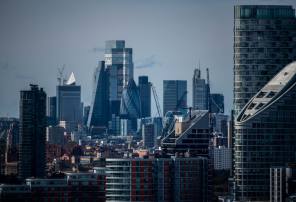
Companies which embarked on share buyback programs scooped up a higher return last year compared to firms that paid out dividends, despite experts claiming dividends are more shareholder-friendly.
Dividends and share buybacks are two methods companies use to reward their investors.
Data from Bloomberg indicates that share buybacks would have given shareholders the biggest boost last year.
The PowerShares Global Buyback Achievers Ucits ETF, which tracks firms with expansive buyback programmes, had returned around 39 per cent in sterling terms by the end of last year.
By comparison, the SPDR Global Dividend Aristocrats Ucits ETF, which tracks baskets of high-yielding stocks, had returned nearly 32 per cent in sterling terms over the year, lagging behind the return on the buyback-focused ETF.
Russ Mould, investment director at AJ Bell, said the returns on the dividend tracker were hampered by investors falling out of favour of steady income generators, like bond proxies, in the second half of last year.
The dividend ETF has around 20 per cent exposure to bond proxies such as consumer staples and utilities, compared to 8 per cent with the buyback ETF.
Mr Mould said investors started shifting into cyclical stocks instead as expectations on economic growth and inflation began to pick up.
This helped the buyback tracker, which has around a 45 per cent weighting towards industrials and consumer cyclicals, outpace the dividend tracker, which has a 21 per cent weighting to cyclicals by comparison.
While Mr Mould said buybacks have a role to play, he said ultimately he preferred dividends.
“Dividends are more predictable and the decision to raise, hold or cut the dividend is one no management team will take lightly, whereas buybacks can be started or stopped at the drop of a hat.
“The regularity of dividends also means they can be terrific in drawdown and for cash-planning purposes, while reinvesting them is what really unlocks the value from equities over the very long term, because then the power of compounding is on your side.”
By comparison, Mr Mould said share buyback programs are often part of a “cosmetic exercise” aimed at showing the management’s confidence in the stock and company, rather than part of a disciplined cash allocation process.
“My big concern is the use in some cases of debt to fund buybacks as that will come back to haunt some companies in the future,” he said.
Yet Mr Mould also warned that dividend cover is currently at a historically low level.
“Clients and advisers need to make sure their fund managers are doing their homework here too, looking at not just earnings cover but free cash flow cover, the amount of debt on balance sheets and also whether a pension deficit could strain a company’s ability to keep paying or grow its dividends.”
Ben Willis, head of research for Whitechurch Financial Consultants, said his company’s core investment philosophy over the years has been in favour of dividends.
“In my view, dividends are more shareholder friendly because you are returning part of the profits back to investors year-on-year,” he said.
Mr Willis also pointed out that while share buybacks help push the share price up, this is largely carried out for the benefit of company directors and large shareholders.
katherine.denham@ft.com



